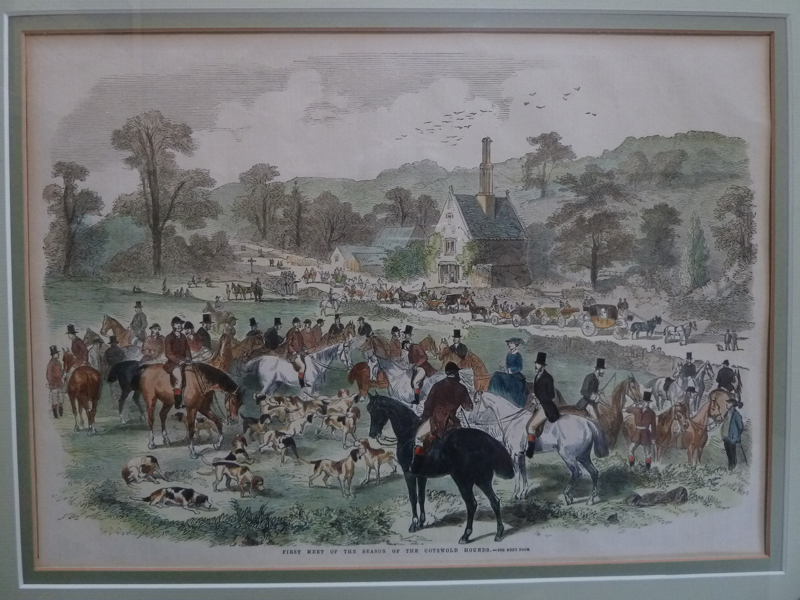History
Hunting with hounds has a long history, certainly back into Roman times, but fox hunting as we know it today, with a pack of hounds trained to hunt by smell rather than sight, dates from the late 17th Century. Through the 18th and early 19th Centuries, wealthy landowners refined the breeding which was formalised in the first Stud Book in 1841. During this period the hounds were generally the private property of the landowner, who might hunt his hounds over a vast area of country, moving the pack to different kennels to be close to the areas being hunted.
Although there had been hunting in what is now the North Cotswold country in the early 18th Century, the earliest records of hunting in what is now the Cotswold country date from 1772 when Mr Bulkeley Fretwell returned from India in ill-health and established a pack of foxhounds (known as the Fretwell Hounds) at Stow-on-the-Wold, hunting the area west of Stow towards Cheltenham and north towards Broadway.
The Fretwell pack lasted 24 seasons, after which some of the country was hunted by adjoining Hunts. Then, in 1810, the whole country was passed to Lord Segrave who had established kennels at the family seat of Berkeley Castle, at Whaddon Lane in Cheltenham, and at Buckland (south of Broadway). Lord Segrave moved his northernmost kennels from Buckland to the centre of Broadway in 1839. Lord Segrave became Earl Fitzhardinge and the history of the Cotswold Hunt starts with his death, from a hunting accident, in 1857.
Shortly after the Earl’s death his successor, Sir Maurice Berkeley, announced that he no longer wished to hunt the Cheltenham and Broadway countries. The Cotswold Hunt was formed, under the Mastership of Mr Cregoe Colmore, to hunt both countries with a pack of hounds purchased from Lord Gifford who was at that time relinquishing the Mastership of the Vale of the White Horse Hunt.
The first meet of the Cotswold Hounds was at Dowdeswell Woods on the 1st November 1858, as reported in the Illustrated London News of 13th November 1858.

It was apparent, almost from the start, that Mr Colmore was less than enthusiastic about hunting the Broadway country and in 1867 the country was split. The Broadway country passed to the newly-formed North Cotswold Hunt, based at the kennels in Broadway, and the Cotswold Hunt retained the Cheltenham country. The Cotswold passed through a number of Masterships in the late 19th and early 20th Centuries, all basing their hounds at the kennels established by Earl Fitzhardinge in Cheltenham. By the early 1920s these were becoming inadequate and, in 1924 during Major Jackson’s Mastership, the hounds left Whaddon Lane for their new kennels at Ossage Farm near Andoversford, where they remain to the present day.
After Lt.Col Heber-Percy’s mobilisation in 1941, the Hunt was run by the Committee for four years until the Mastership passed to the Misses Violet and May Wilson in 1946. The twin sisters came under a lot of pressure from farmers in the vale and, in 1947, they passed the western side of their country to the newly-formed Cotswold Vale Farmers Hunt. The Wilson sisters were replaced the following year by the legendary Captain Ronnie Wallace, who re-established the Cotswold kennel from scratch starting with bitches from the Percy and Ludlow packs.
And so the Cotswold continues to this day, now hunting from the kennels at Ossage Farm across a country stretching from Cheltenham in the West to Northleach in the East, and from Toddington in the North to Stroud in the South.
